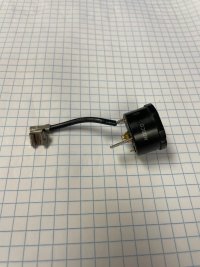Hoping for suggestions for diagnosing issue with stand up freezer. Pretty new unit - maybe 2 years old now, I use it as temperature control for my conical. Tried brewing with S04 recently and went out of town day after pitching yeast. I was pushing the limits on capacity, so had a blow off tube into bucket in the freezer fully expecting some krausen to get pushed over into the bucket. Came back 4 days later and the fermentation had gone quite aggressive, had overflowed my blow off bucket and then filled a sheet pan I keep under the conical inside the freezer (to aid cleanup). I guess the krausen over flowed that pan too as I found it filled the bucket under the freezer (bucket clips to the back of the compressor) was filled with yeast - nasty vinegar smelling semi cooked yeast at that. (story here is a bit out of order, i found the yeast in that bucket later but am thinking this overflow may be linked to my issue)
Anyway fermentation was done, I capped the blow off, switched to gas manifold, let it rest a couple more days and proceeded with yeast dumping followed by dry hopping. Everything was going ok till I went to cold crash and while freezer came right on, a couple hours later still running but no cooling had happened...
Next day started in on watching YouTube videos to try to get this sorted out. Here is my situation...
Thermostat control works and has continuity
Fan works and runs when the thermostat is calling for cold
Fins and coils inside the unit (behind the false back wall) look to be in good shape...not dirty, not visibly damaged
Compressor is warm/hot to touch...not so hot I can't touch it for extended period but warmer than body heat
Checked capacitor...got a multimeter with capacitor testing, capacitory is rated 15 nf +/- 5% and got a 13.25 so I replaced the capacitor. New one checked out at 14.95 nf so installed that...no joy
Checked resistance on the three pins on the compressor...configuration is 1 on top, 2 on bottom, resistance between the 2 on the bottom is about 10, resistance between the top and each of the bottom pins is about 5. [Didn't check pins to ground yet...read about that test last night after I was done for the evening]
Checked the start relay...little foggy on what I did here but remember it involved jumping the electrical connections together and then checking continuity...found a YouTube that walked me through it on what appeared to be exactly my unit and ended up convinced it was good.
So any ideas? Pretty bummed as I've already lost one brew day over this.
Anyway fermentation was done, I capped the blow off, switched to gas manifold, let it rest a couple more days and proceeded with yeast dumping followed by dry hopping. Everything was going ok till I went to cold crash and while freezer came right on, a couple hours later still running but no cooling had happened...
Next day started in on watching YouTube videos to try to get this sorted out. Here is my situation...
Thermostat control works and has continuity
Fan works and runs when the thermostat is calling for cold
Fins and coils inside the unit (behind the false back wall) look to be in good shape...not dirty, not visibly damaged
Compressor is warm/hot to touch...not so hot I can't touch it for extended period but warmer than body heat
Checked capacitor...got a multimeter with capacitor testing, capacitory is rated 15 nf +/- 5% and got a 13.25 so I replaced the capacitor. New one checked out at 14.95 nf so installed that...no joy
Checked resistance on the three pins on the compressor...configuration is 1 on top, 2 on bottom, resistance between the 2 on the bottom is about 10, resistance between the top and each of the bottom pins is about 5. [Didn't check pins to ground yet...read about that test last night after I was done for the evening]
Checked the start relay...little foggy on what I did here but remember it involved jumping the electrical connections together and then checking continuity...found a YouTube that walked me through it on what appeared to be exactly my unit and ended up convinced it was good.
So any ideas? Pretty bummed as I've already lost one brew day over this.








![Craft A Brew - Safale S-04 Dry Yeast - Fermentis - English Ale Dry Yeast - For English and American Ales and Hard Apple Ciders - Ingredients for Home Brewing - Beer Making Supplies - [1 Pack]](https://m.media-amazon.com/images/I/41fVGNh6JfL._SL500_.jpg)

















































